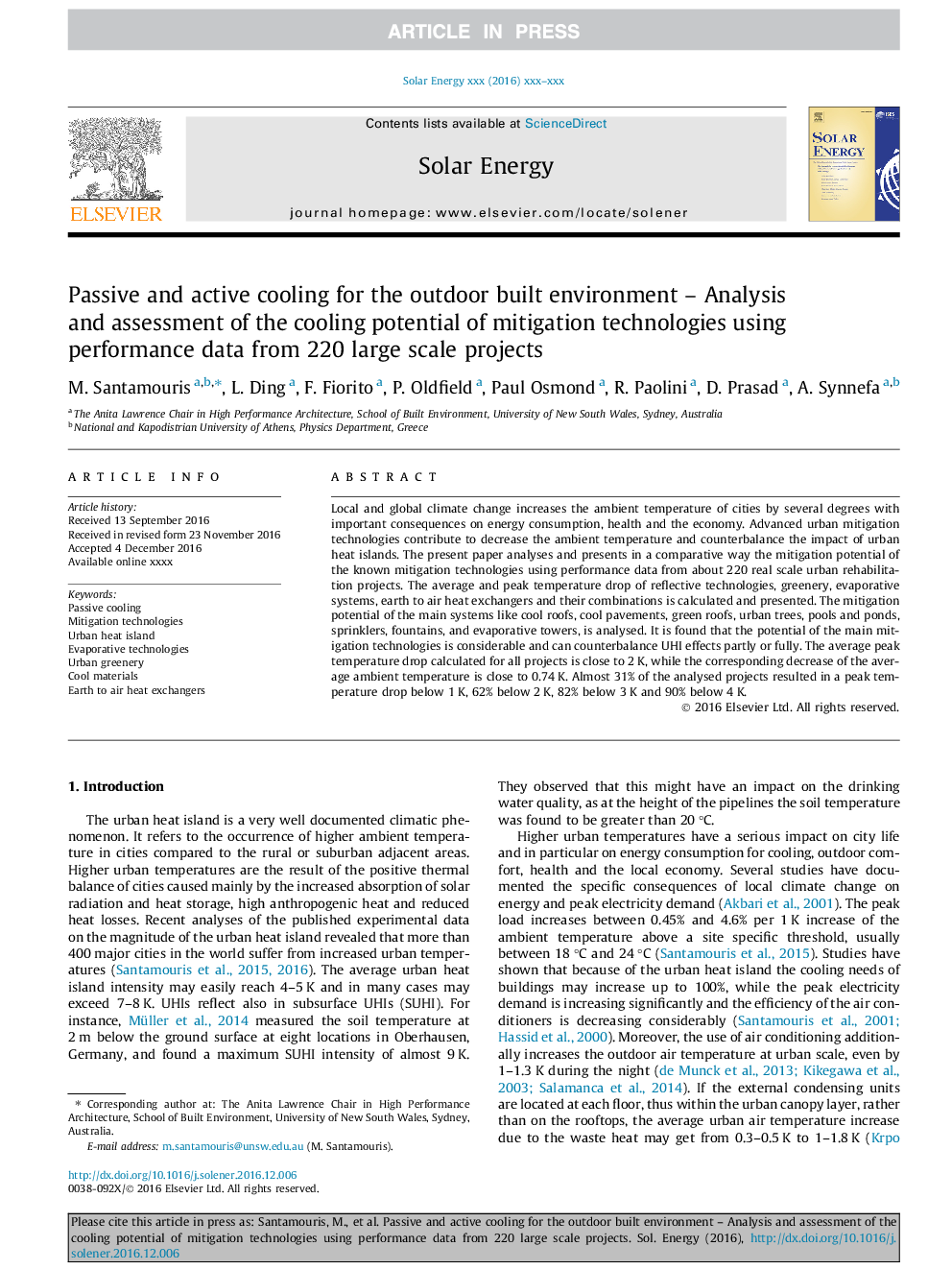| Article ID | Journal | Published Year | Pages | File Type |
|---|---|---|---|---|
| 5450585 | Solar Energy | 2017 | 20 Pages |
Abstract
Local and global climate change increases the ambient temperature of cities by several degrees with important consequences on energy consumption, health and the economy. Advanced urban mitigation technologies contribute to decrease the ambient temperature and counterbalance the impact of urban heat islands. The present paper analyses and presents in a comparative way the mitigation potential of the known mitigation technologies using performance data from about 220 real scale urban rehabilitation projects. The average and peak temperature drop of reflective technologies, greenery, evaporative systems, earth to air heat exchangers and their combinations is calculated and presented. The mitigation potential of the main systems like cool roofs, cool pavements, green roofs, urban trees, pools and ponds, sprinklers, fountains, and evaporative towers, is analysed. It is found that the potential of the main mitigation technologies is considerable and can counterbalance UHI effects partly or fully. The average peak temperature drop calculated for all projects is close to 2Â K, while the corresponding decrease of the average ambient temperature is close to 0.74Â K. Almost 31% of the analysed projects resulted in a peak temperature drop below 1Â K, 62% below 2Â K, 82% below 3Â K and 90% below 4Â K.
Related Topics
Physical Sciences and Engineering
Energy
Renewable Energy, Sustainability and the Environment
Authors
M. Santamouris, L. Ding, F. Fiorito, P. Oldfield, Paul Osmond, R. Paolini, D. Prasad, A. Synnefa,
